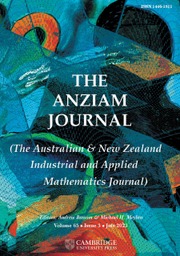No CrossRef data available.
Article contents
SIAMESE NETWORKS FOR POINCARÉ EMBEDDINGS AND THE RECONSTRUCTION OF EVOLUTIONARY TREES
Published online by Cambridge University Press: 07 July 2025
Abstract
We present a method for reconstructing evolutionary trees from high-dimensional data, with a specific application to bird song spectrograms. We address the challenge of inferring phylogenetic relationships from phenotypic traits, like vocalizations, without predefined acoustic properties. Our approach combines two main components: Poincaré embeddings for dimensionality reduction and distance computation, and the neighbour-joining algorithm for tree reconstruction. Unlike previous work, we employ Siamese networks to learn embeddings from only leaf node samples of the latent tree. We demonstrate our method’s effectiveness on both synthetic data and spectrograms from six species of finches.
Keywords
MSC classification
Information
- Type
- Research Article
- Information
- Copyright
- © The Author(s), 2025. Published by Cambridge University Press on behalf of Australian Mathematical Publishing Association Inc


